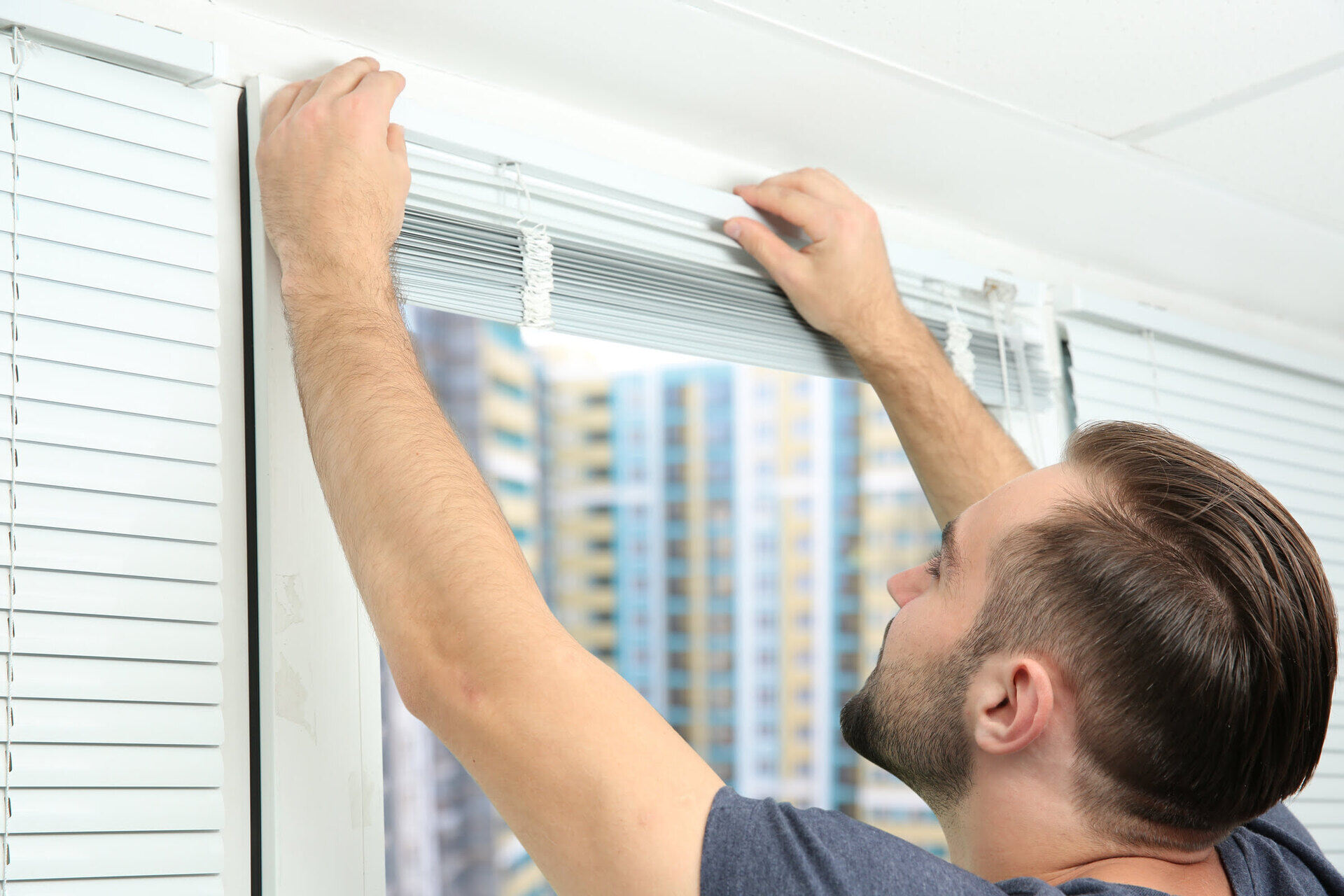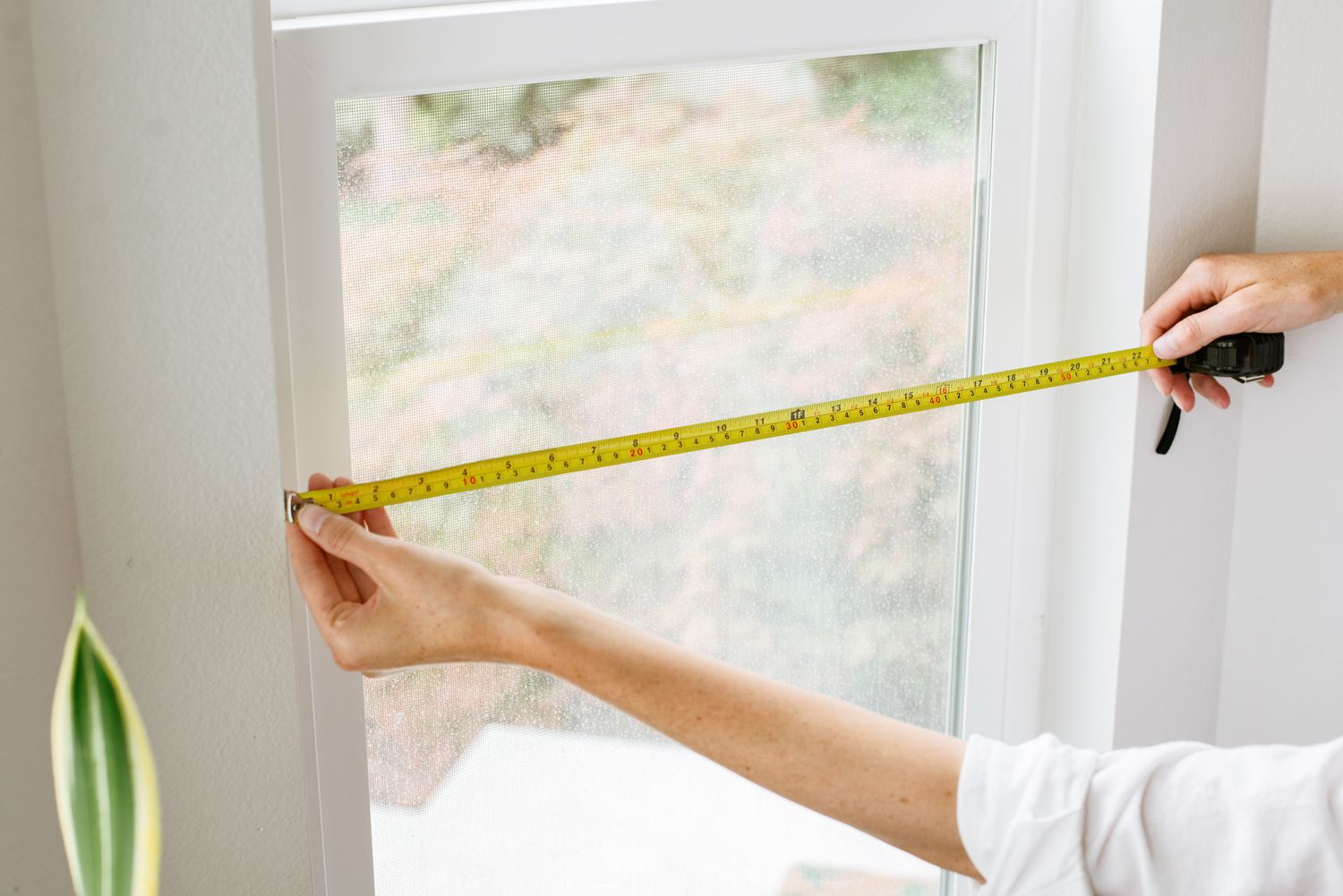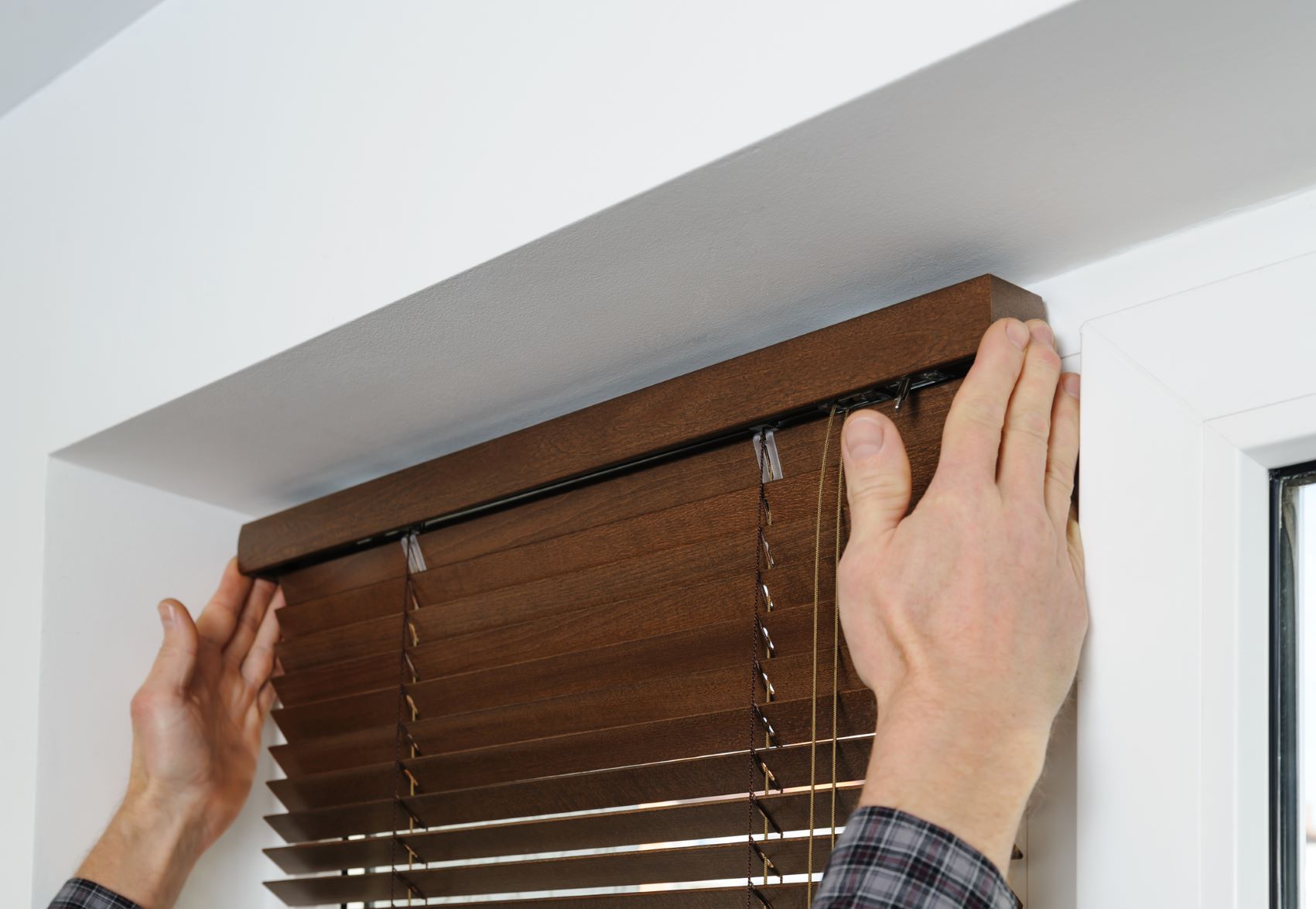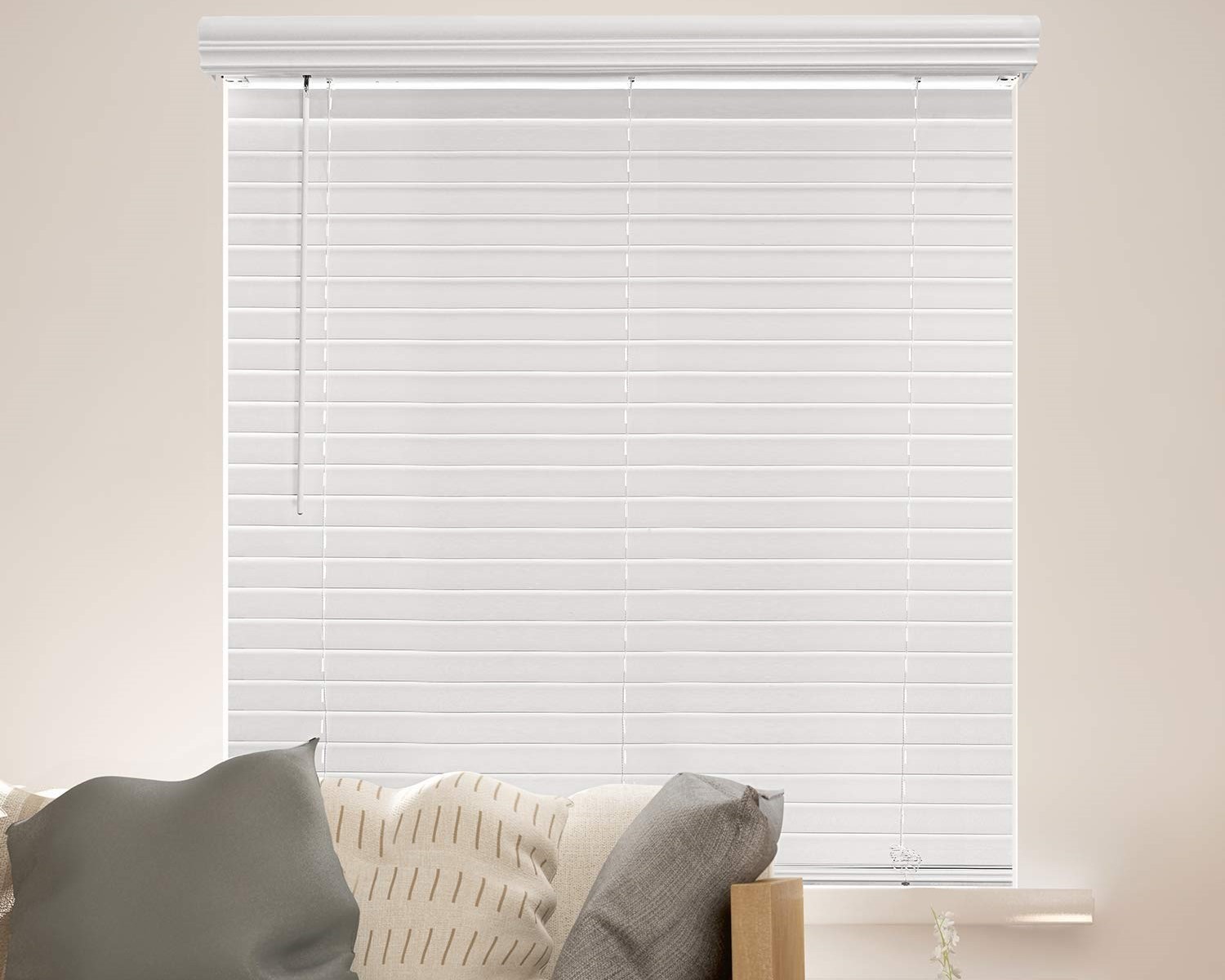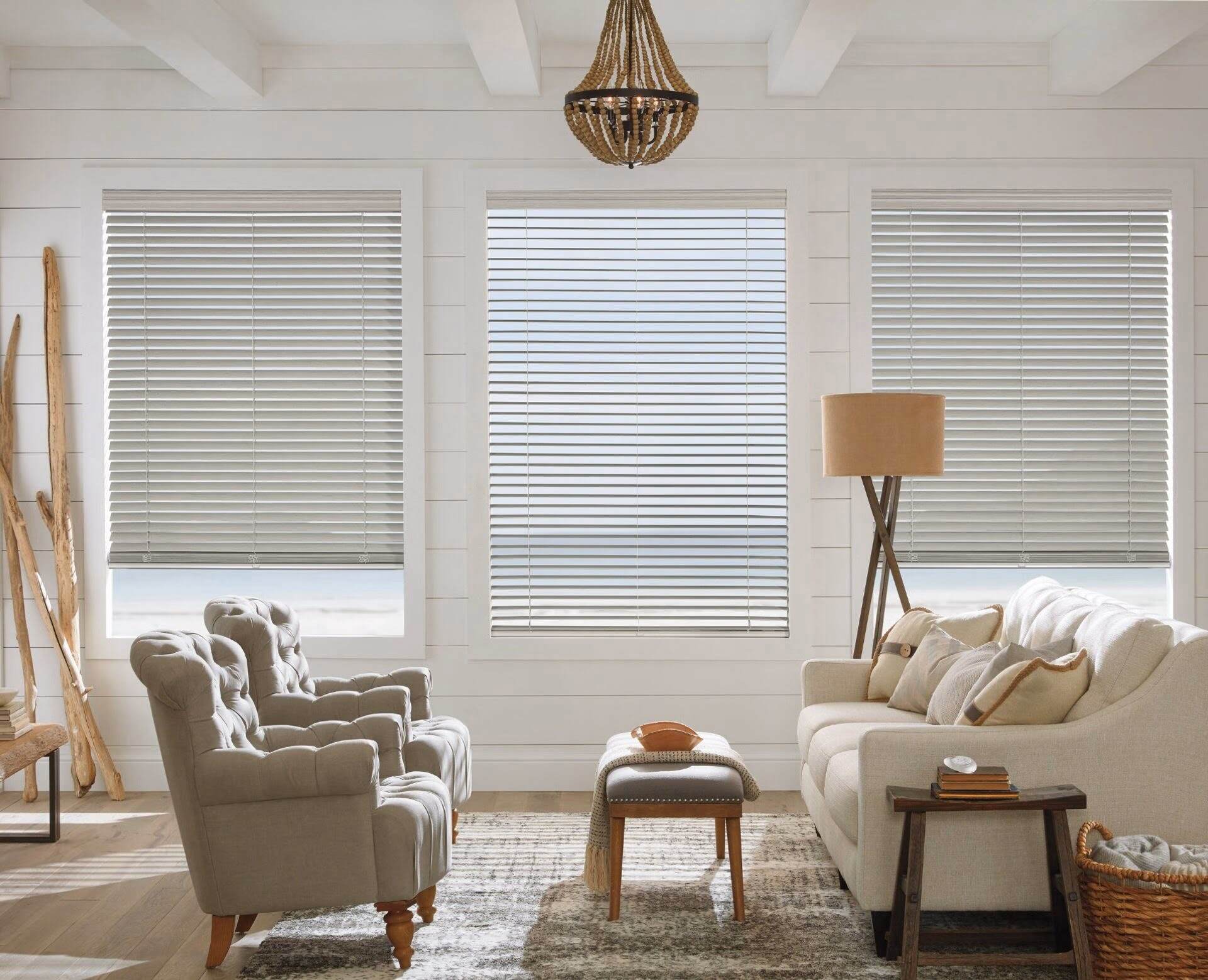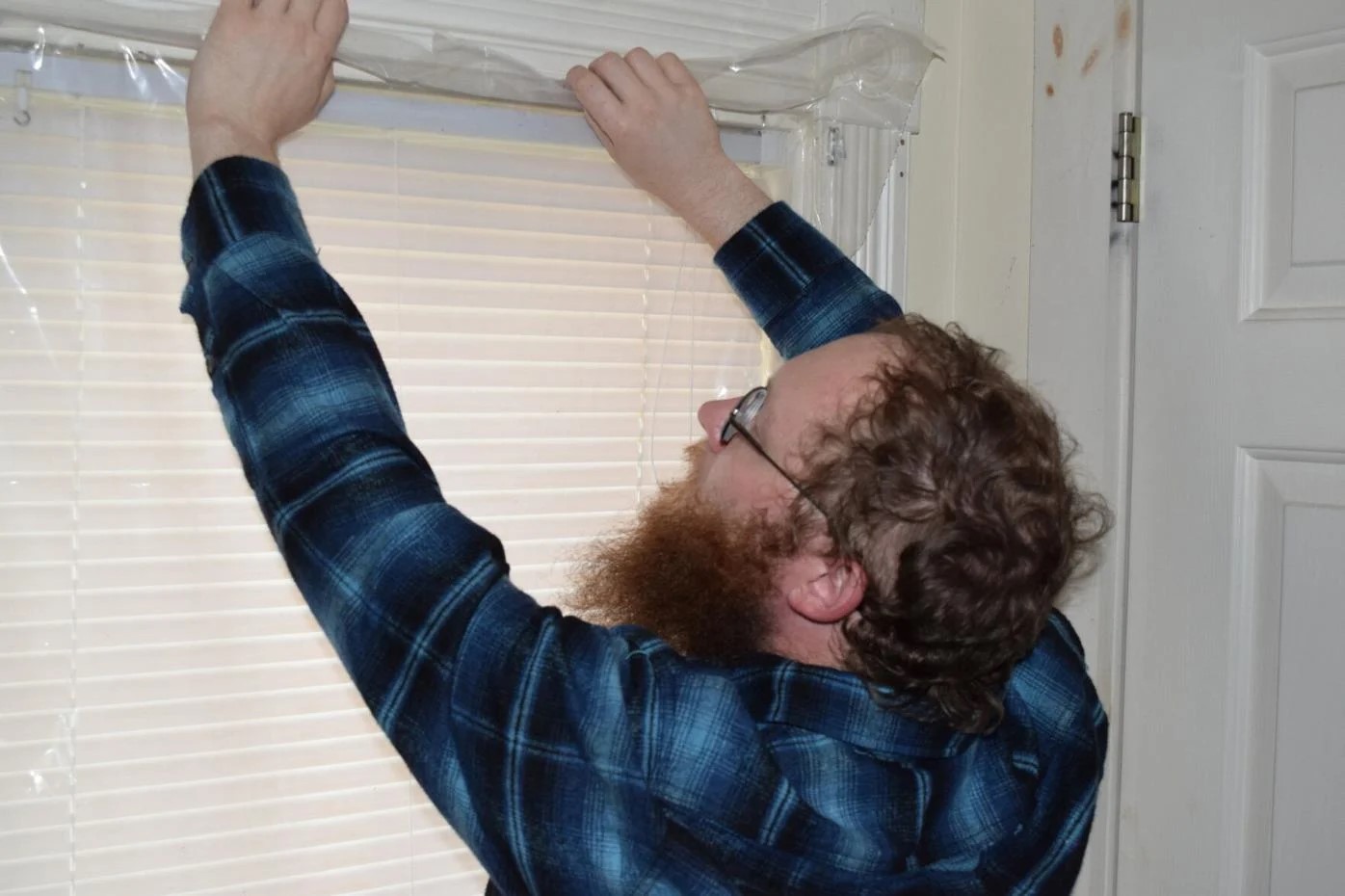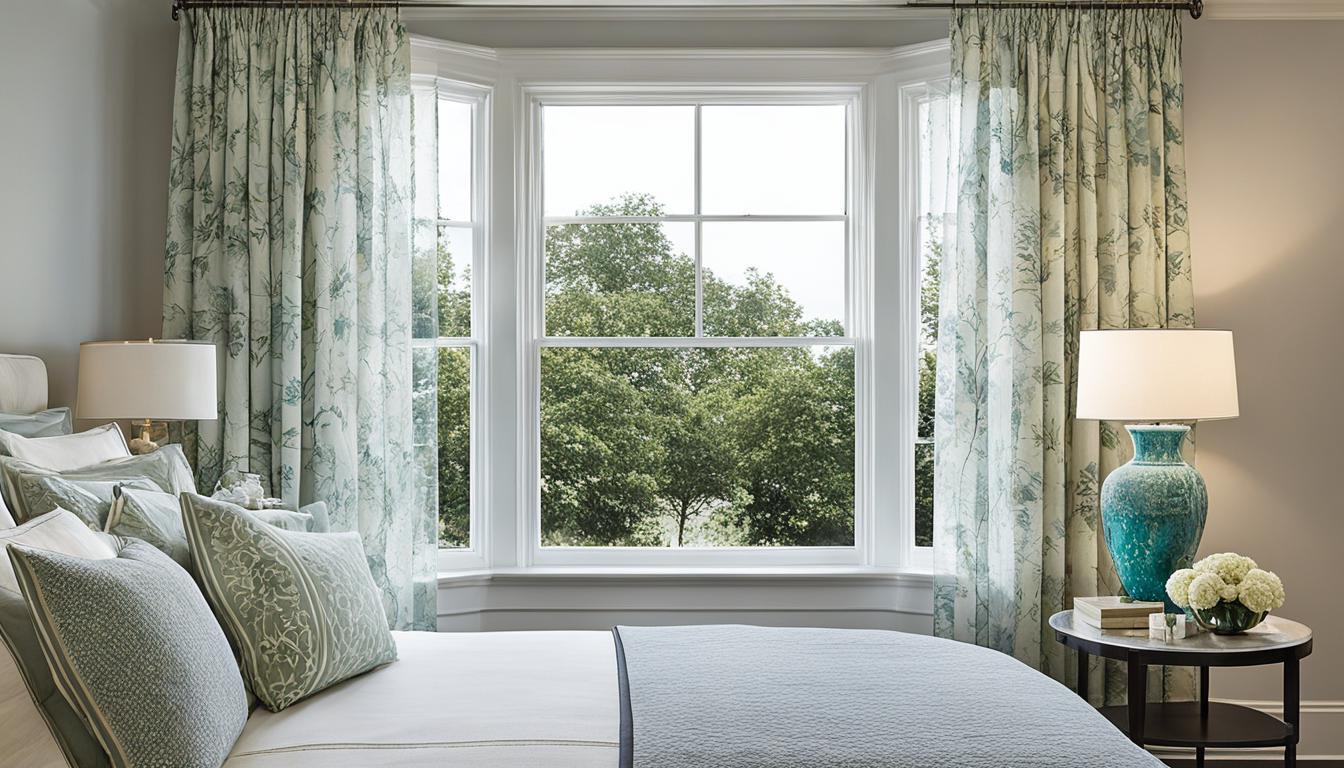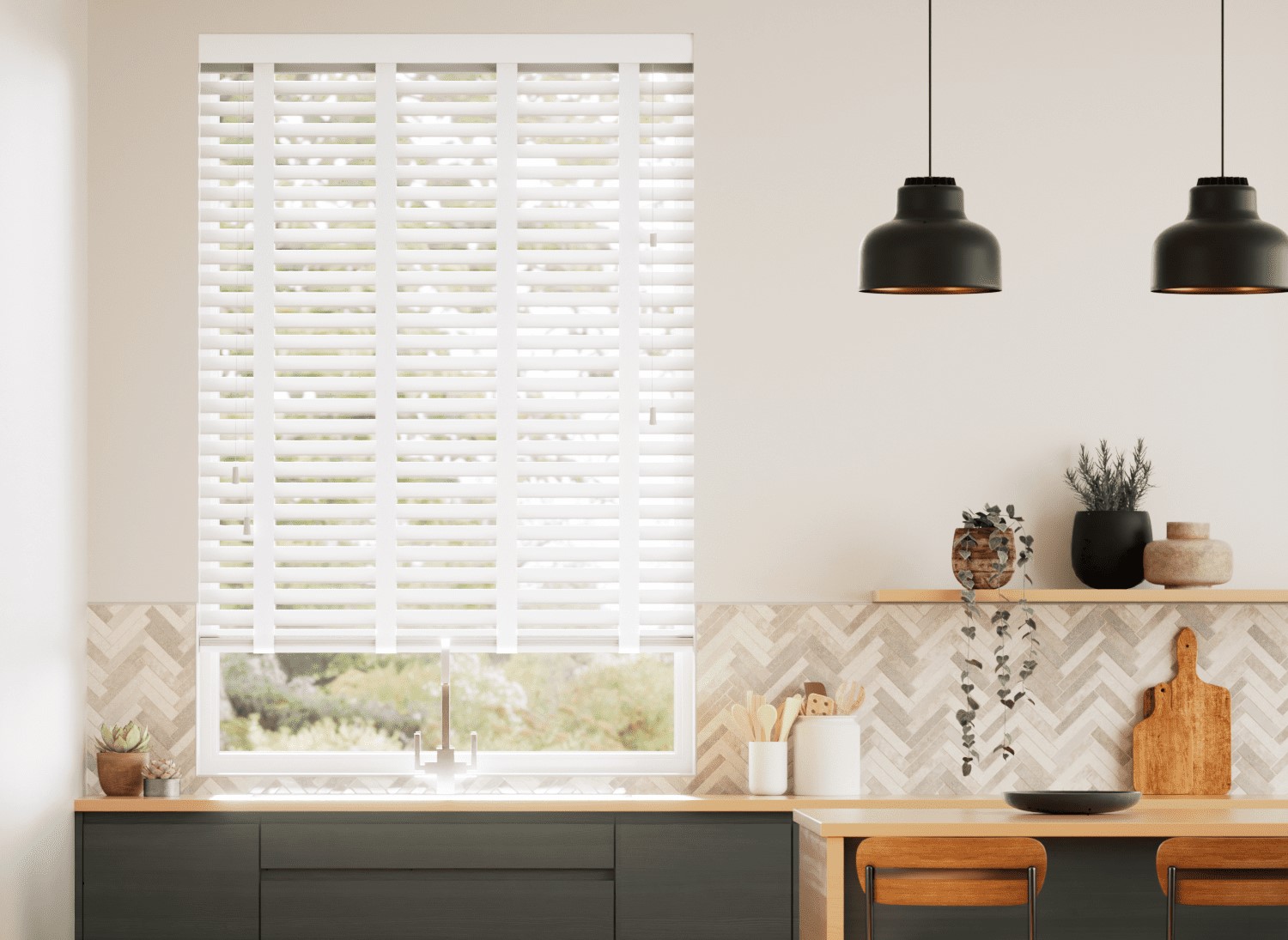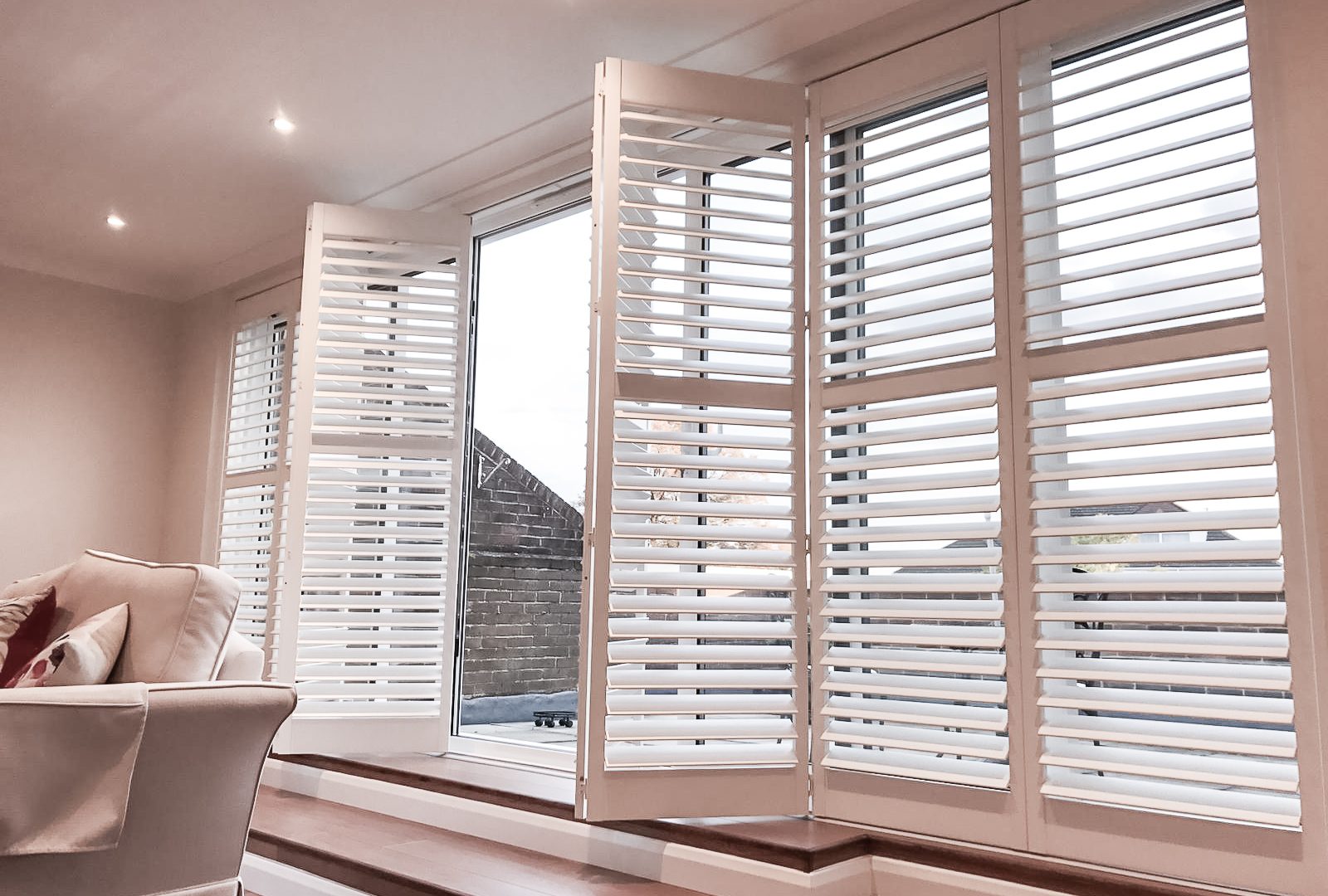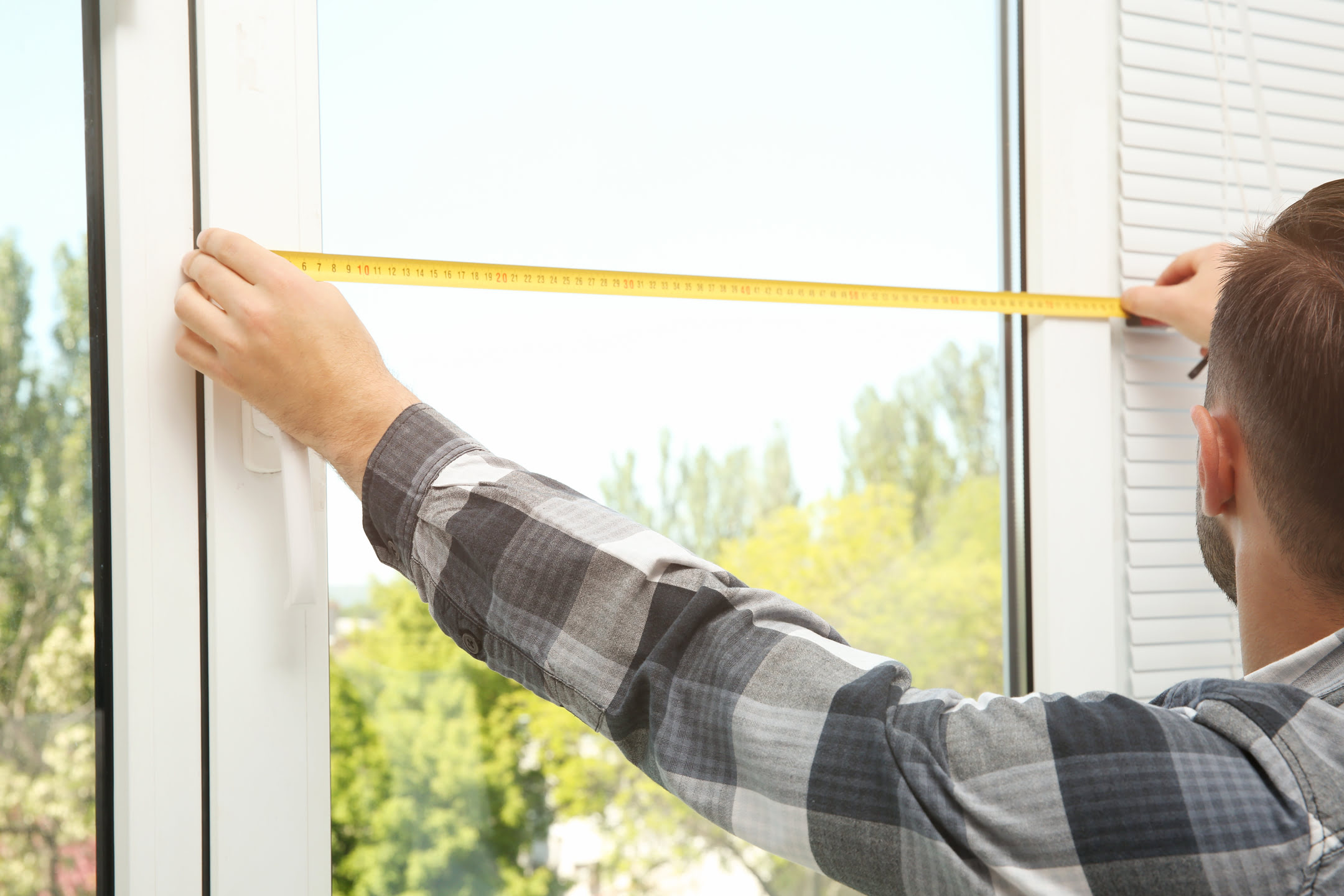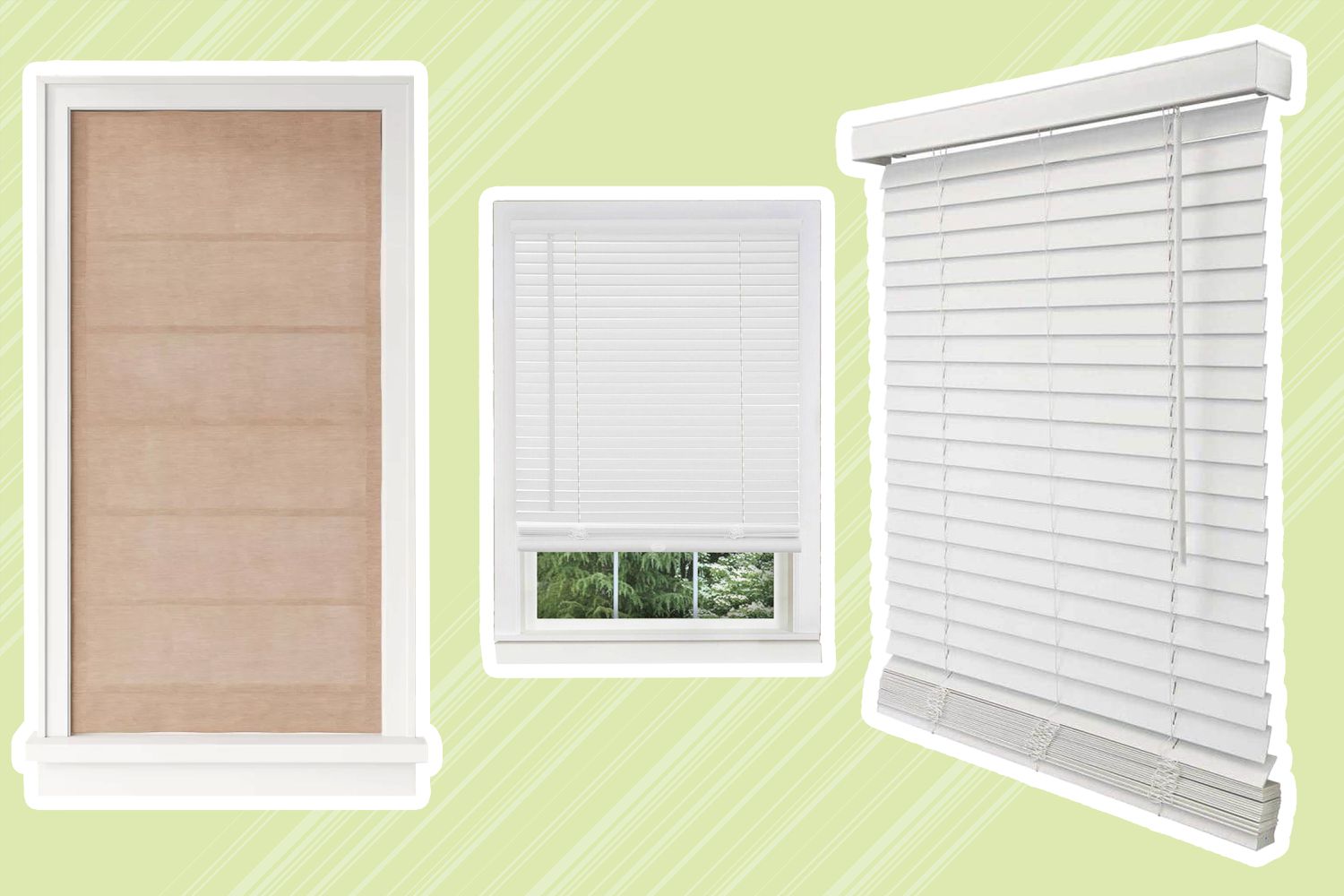

Articles
Which Window Blinds Are The Best
Modified: October 20, 2024
Looking for the best window blinds? Check out our informative articles to help you choose the perfect window blinds for your home.
(Many of the links in this article redirect to a specific reviewed product. Your purchase of these products through affiliate links helps to generate commission for Storables.com, at no extra cost. Learn more)
Introduction
When it comes to window treatments, blinds are a popular choice for both practicality and style. They offer privacy, light control, and can enhance the overall aesthetics of a room. However, with so many options available, it can be overwhelming to choose the best window blinds for your home or office. In this article, we will explore the different types of window blinds and discuss their features, pros, and cons, helping you make an informed decision.
Key Takeaways:
- Choose Venetian blinds for versatile light control, sleek aesthetics, and durability. Consider dust accumulation and potential light gaps as minor trade-offs for their functionality and style.
- Opt for cellular/honeycomb blinds for energy efficiency, customizable light control, and enhanced privacy. While they may come at a higher cost, their long-term benefits make them a worthwhile investment for a comfortable and stylish living space.
Read more: What Blinds Are Best For Big Windows
Different Types of Window Blinds
1. Venetian Blinds: Venetian blinds are horizontal slats made of different materials such as aluminum, wood, or PVC. They are versatile and allow precise control of sunlight and privacy. The slats can be tilted to adjust the light entering the room and can be raised or lowered as needed.
2. Roman Blinds: Roman blinds consist of soft, fabric panels that fold up in an accordion-like manner when raised. They provide a sleek and elegant look, adding a touch of sophistication to any space. Roman blinds are available in various fabrics, patterns, and colors to match different interior styles.
3. Roller Blinds: Roller blinds are made of a single piece of fabric that rolls up and down using a cord or a chain mechanism. They are a popular choice due to their simplicity and affordability. Roller blinds come in a wide range of designs, including blackout and sunscreen options, offering privacy and light control.
4. Vertical Blinds: Vertical blinds feature vertical slats that can be tilted to control light and privacy. They are commonly seen in offices and larger windows or sliding glass doors. Vertical blinds are available in various materials, including fabric, vinyl, or aluminum, offering versatility in style and function.
5. Wooden Blinds: Wooden blinds bring warmth and natural beauty to any space. They are typically crafted from hardwood, such as basswood or bamboo. Wooden blinds offer excellent light control and insulation properties, keeping the room cool in summers and warm in winters.
6. Cellular/Honeycomb Blinds: Cellular or honeycomb blinds are designed with a unique honeycomb structure that traps air, providing insulation. These blinds are energy-efficient, reducing heat loss in winter and heat gain in summer. They come in various opacities, providing options for light control and privacy.
Each type of window blind offers its own set of benefits and considerations. Before making a decision, it is essential to assess your specific needs and priorities. Let’s explore some factors to consider when choosing window blinds in the next section.
Venetian Blinds
Venetian blinds are a classic and popular choice for window coverings. They are characterized by horizontal slats that can be adjusted to control the amount of light and privacy in a room. Venetian blinds are available in various materials, including aluminum, wood, and PVC, each offering its own unique benefits.
Pros:
- Versatility: Venetian blinds allow for precise control over light and privacy. By adjusting the slats, you can easily regulate the amount of sunlight entering the room.
- Aesthetic Appeal: With a sleek and modern design, Venetian blinds can complement any interior style, from contemporary to traditional. They come in a wide range of colors and finishes to match your decor.
- Durability: Aluminum Venetian blinds are known for their durability and resistance to moisture, making them suitable for humid environments like bathrooms and kitchens. Wooden Venetian blinds offer a natural and timeless look.
Cons:
- Dust Accumulation: Due to the horizontal slats, Venetian blinds can accumulate dust and require regular cleaning. However, choosing blinds with wider slats or opting for dust-resistant materials can minimize this issue.
- Fragility: While aluminum blinds are durable, wooden Venetian blinds are more prone to damage, such as warping or cracking, especially in areas with high humidity. Proper care and maintenance are necessary to prolong their lifespan.
- Light Gaps: When the slats are tilted open, there may be slight light gaps between the slats. This can reduce the overall light control and privacy level.
Venetian blinds are a versatile option that offers both functionality and style. Whether you choose aluminum, wood, or PVC, Venetian blinds can enhance the aesthetics of any room while providing control over sunlight and privacy.
Roman Blinds
Roman blinds are an elegant and sophisticated window covering option. They are made of soft fabric panels that fold up in an accordion-like manner when raised. Roman blinds provide a clean and streamlined look, adding a touch of luxury to any space. Here, we will discuss the pros and cons of Roman blinds to help you determine if they are the right choice for your windows.
Pros:
- Style and Aesthetics: Roman blinds offer a refined and polished appearance that can elevate the overall aesthetics of a room. They come in a variety of fabrics, patterns, and colors to suit different interior design styles, from classic to contemporary.
- Light Control: With Roman blinds, you have the flexibility to adjust the level of natural light entering the room. The panels can be partially or fully lowered, allowing for customizable light control throughout the day.
- Privacy: When fully lowered, Roman blinds provide excellent privacy, preventing outsiders from peering into your living space. This makes them particularly suitable for bedrooms and areas where privacy is a priority.
Cons:
- Cleaning and Maintenance: Roman blinds are made of fabric, which means they can accumulate dust and require periodic cleaning. Some Roman blinds can be machine-washed, while others may need professional cleaning, depending on the fabric and care instructions.
- Limited Insulation: Unlike some other types of blinds, Roman blinds do not have the same level of insulation properties. While they can still help to reduce heat transfer and provide some insulation, they may not be as effective as blinds with thicker materials or additional insulating layers.
- Potential for Wrinkling: Over time, Roman blinds may develop wrinkles or creases, especially if they are made of delicate or lightweight fabrics. Regular smoothing or steaming can help maintain their appearance and keep them looking crisp.
Roman blinds are a timeless window treatment option that offers elegance, versatility, and customizable light control. They are an excellent choice for those seeking a stylish and sophisticated look for their windows while maintaining privacy and the ability to regulate natural light.
Roller Blinds
Roller blinds are a popular and versatile window covering option that offers simplicity, affordability, and functionality. They consist of a single piece of fabric that rolls up and down using a cord or chain mechanism. Roller blinds are available in a wide range of designs, making them suitable for various rooms and decor styles. Let’s take a closer look at the pros and cons of roller blinds.
Pros:
- Easy to Use: Roller blinds are incredibly easy to operate. You can raise or lower them to your desired position with a simple pull of a chain or cord. This makes them suitable for all age groups and accessible for individuals with mobility issues.
- Affordability: Roller blinds are typically more affordable compared to other types of window coverings, making them an economical choice for those on a budget.
- Space-Saving: Roller blinds take up minimal space, making them ideal for smaller rooms or windows where space is limited. When fully raised, they provide an unobstructed view of the outside.
Cons:
- Light Gaps: When a roller blind is fully lowered, there may be slight light gaps between the fabric and the window frame. This can impact the level of light control and privacy.
- Limited Style Options: While roller blinds come in various colors and patterns, the design options may be more limited compared to other types of blinds. However, advances in technology have led to the availability of customizable options, including printed and patterned roller blinds.
- No Adjustability of Slats: Unlike Venetian or vertical blinds, roller blinds do not offer adjustable slats to control the angle of light entering the room. They are either fully open or fully closed, which may not be suitable for those who require precise light control.
Roller blinds are a practical and affordable window covering option that can suit a wide range of spaces and purposes. Their simplicity and ease of use make them a popular choice for bedrooms, living rooms, kitchens, and offices.
Read more: What Is Window Blinds
Vertical Blinds
Vertical blinds are a versatile and functional option for covering large windows or sliding glass doors. They consist of vertical slats that can be tilted to control light and privacy. Vertical blinds are commonly seen in offices and commercial spaces but can also be used in residential settings. Let’s explore the pros and cons of vertical blinds to help you determine if they are the right choice for your windows.
Pros:
- Light Control: Vertical blinds provide excellent control over natural light. By tilting the slats, you can adjust the angle of sunlight entering the room, allowing you to create the desired ambiance and reduce glare.
- Privacy: When the slats are closed, vertical blinds offer a high level of privacy, as they prevent others from seeing inside your space while still allowing light to filter through.
- Versatility: Vertical blinds are suitable for both large windows and sliding glass doors. They can be customized to fit various sizes, allowing for a uniform and cohesive look throughout your space.
Cons:
- Noise and Drafts: Due to the vertical design, vertical blinds may create some noise when they sway or hit against each other. Additionally, if proper installation and sealing aren’t done, they may allow drafts of air to enter the room.
- Durability: While vertical blinds are generally durable, over time, the slats may become loose or brittle, especially if they are made of low-quality materials. Opting for high-quality materials and regular maintenance can help prolong their lifespan.
- Cleaning Difficulty: Cleaning vertical blinds can be more challenging compared to other types of blinds, as the slats need to be individually cleaned. However, many vertical blinds now come with antimicrobial or dust-resistant coatings to help minimize the accumulation of dirt and allergens.
Vertical blinds offer practicality and style for larger windows or sliding doors. With their excellent light control and privacy features, they are a popular choice for both residential and commercial spaces.
Wooden Blinds
Wooden blinds are a timeless and elegant choice for window coverings. Made from real hardwood, such as basswood or bamboo, wooden blinds bring warmth and natural beauty to any space. They offer a classic and organic look that can enhance the aesthetics of both traditional and modern interiors. Let’s delve into the pros and cons of wooden blinds.
Pros:
- Visual Appeal: Wooden blinds add a touch of sophistication and natural beauty to any room. The rich, grainy texture and warm tones of the wood can create a cozy and inviting atmosphere.
- Light Control: With wooden blinds, you can easily adjust the amount of light entering the room by tilting the slats. This allows you to strike the perfect balance between natural light and privacy.
- Insulation: Wood is a natural insulator, which means that wooden blinds can help regulate the temperature in a room. They provide an extra barrier against heat loss during winter and heat gain in the summer, making them energy-efficient.
Cons:
- Maintenance: Wooden blinds require regular maintenance to keep them in optimal condition. Dusting and occasional cleaning are necessary to prevent the buildup of dirt and grime. It’s important to avoid using harsh cleaning products that may damage the wood.
- Susceptible to Moisture: Wooden blinds, especially those made from natural wood, are sensitive to moisture. High humidity levels can cause the wood to warp or crack over time. It’s crucial to avoid installing wooden blinds in areas with excessive moisture, such as bathrooms or kitchens, or consider using alternative materials like faux wood blinds.
- Cost: Compared to other types of blinds, wooden blinds are generally more expensive due to the use of genuine hardwood. However, the durability and aesthetic appeal of wooden blinds make them a worthwhile investment for many homeowners.
Wooden blinds offer a timeless charm and natural elegance to any space. With their ability to control light, provide insulation, and create a warm ambiance, they are a popular choice for those seeking a classic and sophisticated window treatment.
Cellular/Honeycomb Blinds
Cellular or honeycomb blinds are a unique and innovative window covering option. They are designed with a honeycomb-like structure that traps air, providing insulation and energy efficiency. These blinds are not only functional but also aesthetically pleasing. Let’s explore the pros and cons of cellular/honeycomb blinds.
Pros:
- Energy Efficiency: Cellular/honeycomb blinds are known for their excellent insulation properties. The honeycomb structure traps air, creating a barrier that helps to regulate the temperature in a room. This can result in energy savings and improved comfort year-round.
- Light Control: The design of cellular/honeycomb blinds allows for versatile light control options. They come in various opacities, ranging from sheer to blackout, providing the flexibility to adjust the level of light entering the room according to your needs.
- Privacy: When closed, cellular/honeycomb blinds offer a high level of privacy, preventing outsiders from seeing inside your space. This makes them a popular choice for bedrooms, bathrooms, and other areas where privacy is essential.
Cons:
- Cost: Cellular/honeycomb blinds are usually more expensive compared to other types of blinds due to their advanced design and energy-efficient features. However, the long-term energy savings they provide may offset the initial cost.
- Cleaning and Maintenance: Cleaning cellular/honeycomb blinds can be more challenging compared to other types of blinds. The unique honeycomb structure requires extra care and attention to remove dust and dirt. Some cellular/honeycomb blinds are designed with dust-resistant or washable materials to ease maintenance.
Factors to Consider When Choosing Window Blinds
Now that we have discussed the different types of window blinds and their pros and cons, let’s explore some important factors to consider when choosing window blinds.
1. Privacy: Consider the level of privacy you need. Depending on the location of your windows and your personal preferences, certain types of blinds, such as roller blinds or cellular blinds, may offer better privacy options.
2. Light Control: Determine how much control you want over the amount of natural light entering your space. Venetian blinds, vertical blinds, and cellular/honeycomb blinds are excellent choices for adjustable light control.
3. Durability: Consider the durability of the materials used in the blinds. Look for blinds made from high-quality materials that can withstand the test of time and resist wear and tear.
4. Energy Efficiency: If energy efficiency is a priority, consider blinds with insulating properties, such as cellular/honeycomb blinds. These can help reduce heat transfer and improve energy efficiency in your home.
5. Style and Aesthetics: Select blinds that complement your interior design style and enhance the overall aesthetics of the room. Choose colors, patterns, and materials that align with your personal preference and the existing decor.
By considering these factors, you can make an informed decision and choose the window blinds that best meet your needs and preferences.
Read more: How To Remove Window Blinds
Privacy
Privacy is an important consideration when choosing window blinds. The level of privacy you desire will depend on the location of your windows, your personal preferences, and the specific rooms in your home. Here, we will explore how different types of blinds can offer varying degrees of privacy.
Venetian Blinds: Venetian blinds, with their adjustable slats, provide a high level of privacy. By simply tilting the slats, you can control the angle of light entering the room while obstructing the view from the outside. This makes Venetian blinds particularly suitable for bedrooms, bathrooms, and areas where you want maximum privacy.
Roman Blinds: Roman blinds, when fully lowered, offer excellent privacy as they cover the entire window. The soft fabric panels provide a clean and sleek look, ensuring no outside visibility. They are a great choice for bedrooms, living rooms, and areas where you want to create a cozy and private atmosphere.
Roller Blinds: Roller blinds, when fully closed, provide a good level of privacy. The single piece of fabric completely covers the window, preventing anyone from seeing inside. Roller blinds are especially suitable for areas where privacy is a priority, such as bedrooms and bathrooms.
Vertical Blinds: Vertical blinds offer versatile privacy options. By tilting the slats, you can adjust the amount of light entering the room and control the level of privacy. When fully closed, vertical blinds provide privacy from prying eyes. They are commonly used for large windows, sliding glass doors, and spaces where privacy is important, such as offices and conference rooms.
Wooden Blinds: Wooden blinds provide a good amount of privacy when the slats are closed. The solid wooden slats effectively block outside visibility and create a private environment. They are a popular choice for various rooms, adding a touch of natural warmth and privacy.
Cellular/Honeycomb Blinds: Cellular/honeycomb blinds offer privacy while still allowing soft, filtered light to enter the room. The unique honeycomb structure provides insulation and opacity options. When closed, cellular/honeycomb blinds offer privacy, making them suitable for bedrooms, living rooms, and areas where you want a balance of privacy and natural light.
Ultimately, the level of privacy you require will depend on your personal preferences, the location of the windows, and the specific needs of each room. Consider the opacity and adjustability of the blinds to ensure that you select the right option to meet your privacy requirements.
Light Control
Light control is an essential factor to consider when choosing window blinds. The ability to regulate the amount of natural light entering a room can significantly impact the ambiance, comfort, and functionality of the space. Here, we will explore how different types of blinds offer various degrees of light control.
Venetian Blinds: Venetian blinds are known for their excellent light control capabilities. The adjustable slats allow you to tilt them at different angles, providing precise control over the amount of sunlight entering the room. You can easily manipulate the slats to create a well-lit space or to reduce glare, making them ideal for rooms where you want to have versatile lighting options.
Roman Blinds: Roman blinds provide a moderate level of light control. When fully lowered, they can block out a significant amount of sunlight, creating a dimmer and more cozy ambiance. However, unlike Venetian blinds, Roman blinds do not offer the same level of adjustability to fine-tune the amount of light entering the room.
Roller Blinds: Roller blinds offer straightforward and effective light control. By simply raising or lowering the blinds, you can either allow natural light to fill the room or completely block it out. Roller blinds are available in a variety of opacities, including blackout options, making them suitable for spaces where light control is crucial, such as bedrooms and media rooms.
Vertical Blinds: Vertical blinds provide good light control by allowing you to tilt the slats to adjust the angle of sunlight entering the room. You can rotate the slats to direct the light where desired, providing both privacy and the ability to create a well-lit space. Vertical blinds are commonly used in rooms with larger windows or sliding doors, where precise light control is desirable.
Wooden Blinds: Wooden blinds can provide effective light control depending on the material and slat size. When the slats are closed, wooden blinds can block out a significant amount of light, creating a cozy and dimmer atmosphere. However, keep in mind that some light may still filter through the gaps between the slats.
Cellular/Honeycomb Blinds: Cellular/honeycomb blinds offer versatile light control options. The honeycomb structure allows soft, diffused light to enter the room while reducing glare. Depending on the opacity of the fabric and the option to raise or lower the blinds, you can achieve varying levels of light control, from softly filtered to nearly complete blackout.
When selecting window blinds, consider the specific needs of each room in terms of desired lighting conditions. Determine whether you prefer adjustable slats, blackout options, or diffused lighting to find the blinds that provide the optimal level of light control to suit your preferences.
When choosing window blinds, consider factors such as light control, privacy, and style. Venetian blinds are versatile and offer adjustable light control, while roller blinds are sleek and easy to clean. Consider your specific needs and preferences before making a decision.
Durability
The durability of window blinds is an important consideration, as it determines their longevity and their ability to withstand the daily wear and tear of use. By choosing blinds made from durable materials and ensuring proper maintenance, you can extend their lifespan and enjoy their functionality for years to come. Let’s explore the durability of different types of blinds:
Venetian Blinds: Venetian blinds are available in various materials such as aluminum, wood, or PVC. Aluminum blinds are known for their durability and resistance to moisture, making them suitable for areas with high humidity like bathrooms and kitchens. Wooden blinds, on the other hand, require more care as they are prone to warping and cracking if exposed to excessive moisture or direct sunlight. PVC blinds are generally durable and resistant to moisture, making them a good choice for environments where durability is essential.
Roman Blinds: Roman blinds are made from soft fabric panels that can withstand regular use. However, the durability of a Roman blind mainly depends on the quality of the fabric chosen. Opting for high-quality, durable fabrics will ensure that the blinds hold up well over time.
Roller Blinds: Roller blinds are generally durable, as they consist of a single piece of fabric that rolls up and down. The durability of roller blinds mainly depends on the quality of the fabric and the mechanisms used for operation. Choosing high-quality components and fabrics will contribute to their long-term durability.
Vertical Blinds: Vertical blinds are available in various materials such as fabric, vinyl, or aluminum. Fabric vertical blinds may require more care as they can be prone to staining and require maintenance. Vinyl and aluminum vertical blinds are generally more durable and resistant to wear and tear.
Wooden Blinds: Wooden blinds can be durable if they are made from high-quality wood and finishes. It is important to keep in mind that wood is a natural material and can be susceptible to warping and cracking if not properly maintained. Regular cleaning and avoiding exposure to excessive moisture or direct sunlight can help extend the lifespan of wooden blinds.
Cellular/Honeycomb Blinds: Cellular/honeycomb blinds are typically made from durable materials such as polyester or other synthetic fabrics. These materials are designed to withstand regular use and are known for their longevity. Proper care and maintenance, including dusting and occasional cleaning, will help preserve the blinds’ durability.
It is crucial to choose blinds made from high-quality materials and to follow the manufacturer’s instructions for cleaning and maintenance. This will ensure that your blinds remain durable and continue to enhance your space for an extended period.
Energy Efficiency
Energy efficiency is a significant consideration when choosing window blinds, as they can have a significant impact on your home’s heating and cooling costs. Energy-efficient blinds can help regulate the temperature in your space, reduce heat gain in the summer, and minimize heat loss in the winter. Let’s explore the energy efficiency of different types of blinds:
Venetian Blinds: Venetian blinds, especially those made from materials such as aluminum or wood, can provide moderate energy efficiency. By adjusting the slats, you can control the amount of sunlight and heat entering the room, allowing for better temperature regulation. Aluminum blinds, in particular, help to reflect sunlight and can reduce the heat transfer into the room.
Roman Blinds: Roman blinds, when made from insulating fabrics such as thermal-backed materials, can provide some degree of energy efficiency. The fabric acts as an additional layer of insulation, helping to minimize heat transfer through the windows.
Roller Blinds: Roller blinds themselves may not offer significant insulation; however, choosing roller blinds with specialized fabrics can enhance their energy efficiency. Look for options like blackout or thermal-backed fabrics, which can help reduce heat gain in summer and heat loss in winter.
Vertical Blinds: Vertical blinds, like roller blinds, are not inherently energy-efficient. However, choosing materials with insulating properties or adding an extra layer of backing to the slats can improve their energy efficiency. Fabrics with thermal properties can assist in minimizing heat loss or gain depending on the season.
Wooden Blinds: Wooden blinds, particularly those made from basswood or bamboo, offer excellent natural insulation properties. Wood is inherently insulating, which can help reduce heat transfer through the windows. This can lead to energy savings as it helps to maintain a more stable indoor temperature and reduces the workload on cooling or heating systems.
Cellular/Honeycomb Blinds: Cellular or honeycomb blinds are renowned for their energy efficiency. The unique honeycomb structure traps air, creating a barrier that provides insulation. This helps to reduce heat transfer through the windows, making them highly energy-efficient options. Cellular/honeycomb blinds are especially effective at reducing heat loss in winter and heat gain in summer, resulting in energy savings throughout the year.
When considering energy efficiency, look for blinds with insulating properties, adequate coverage, and the ability to control sunlight. Additionally, ensure proper measurement, fit, and installation to maximize the energy-saving benefits of your chosen blinds.
Read more: How To Close Window Blinds
Style and Aesthetics
Style and aesthetics play a crucial role in choosing window blinds as they can significantly impact the overall look and feel of a space. The right blinds should not only be functional but also complement your interior design and enhance the beauty of your windows. Let’s explore the style and aesthetic considerations for window blinds:
Venetian Blinds: Venetian blinds offer a classic and versatile style. The horizontal slats create a sleek and modern look that can fit well with a variety of design aesthetics. Available in various materials such as aluminum, wood, or PVC, Venetian blinds come in an array of colors and finishes to match your decor style.
Roman Blinds: Roman blinds offer a timeless and elegant style. The soft fabric panels create a refined and sophisticated look, adding a touch of luxury to any space. Roman blinds come in a wide range of fabrics, patterns, and colors, allowing you to choose the perfect option to complement your interior design.
Roller Blinds: Roller blinds are well-known for their simplicity and minimalistic style. They offer a clean and streamlined appearance, suitable for contemporary and modern spaces. With a wide selection of fabrics, including plain, patterned, and textured options, roller blinds can be customized to match your preferred aesthetic.
Vertical Blinds: Vertical blinds are often associated with commercial settings, but they can also work well in residential spaces. They offer a sleek and professional look, particularly when made from high-quality materials like fabric, vinyl, or aluminum. Vertical blinds are available in a range of colors and textures to suit different interior styles.
Wooden Blinds: Wooden blinds bring a natural and warm aesthetic to any room. The rich and grainy textures of the wood add timeless elegance and create a cozy ambiance. Whether you prefer the classic appeal of basswood or the eco-friendly option of bamboo, wooden blinds can complement both traditional and contemporary decor styles.
Cellular/Honeycomb Blinds: Cellular or honeycomb blinds offer a modern and stylish look. Their clean lines and versatile design make them suitable for various interior styles. Cellular/honeycomb blinds come in a wide range of colors and opacities, allowing you to incorporate them seamlessly into your design scheme.
Pros and Cons of Each Type of Window Blind
Now, let’s summarize the pros and cons of each type of window blind discussed above:
Venetian Blinds:
- Pros: Versatility, aesthetic appeal, durability
- Cons: Dust accumulation, fragility, light gaps
Roman Blinds:
- Pros: Style and aesthetics, light control, privacy
- Cons: Cleaning and maintenance, limited insulation, potential for wrinkling
Roller Blinds:
- Pros: Ease of use, affordability, space-saving
- Cons: Light gaps, limited style options, lack of adjustability
Vertical Blinds:
- Pros: Light control, privacy, versatility
- Cons: Noise and drafts, durability, cleaning difficulty
Wooden Blinds:
- Pros: Visual appeal, light control, insulation
- Cons: Maintenance, susceptible to moisture, cost
Cellular/Honeycomb Blinds:
- Pros: Energy efficiency, light control, privacy
- Cons: Cost, cleaning and maintenance
Consider these pros and cons, along with your personal preferences and the specific needs of your space, to choose the window blind style that aligns best with your aesthetic vision and functional requirements.
Venetian Blinds
Venetian blinds are among the most popular and versatile window covering options. They are characterized by horizontal slats made from various materials, including aluminum, wood, or PVC. Venetian blinds offer a timeless and sleek look that complements a wide range of interior styles. Here, we will explore the pros and cons of Venetian blinds to help you determine if they are the right choice for your windows.
Pros:
- Versatility: Venetian blinds are highly versatile and can be adjusted to control both light and privacy. The slats can be tilted to a desired angle, allowing you to regulate the amount of sunlight entering the room while still maintaining privacy. Additionally, Venetian blinds can be raised or lowered to accommodate different levels of light and airflow.
- Aesthetic Appeal: Venetian blinds offer a classic and elegant look that can enhance the overall aesthetics of any room. They come in a wide range of colors, finishes, and slat sizes to suit various decor styles. Whether you prefer a modern minimalist look or a more traditional ambiance, Venetian blinds can be tailored to meet your design preferences.
- Durability: Venetian blinds, especially those made from aluminum or PVC, are known for their durability and resistance to moisture and environmental factors. This makes them suitable for high-humidity areas such as kitchens and bathrooms. Wood Venetian blinds can also be durable, though they may require more care to prevent warping or cracking.
Cons:
- Dust Accumulation: The horizontal slats of Venetian blinds can trap dust over time, requiring regular cleaning to maintain their appearance. However, various cleaning solutions and techniques are available to make this task easier.
- Fragility: While aluminum and PVC Venetian blinds are generally durable, wooden blinds can be more fragile. They may be susceptible to warping or cracking, especially in areas with high moisture. Proper care and maintenance are necessary to preserve the integrity of wooden Venetian blinds.
- Light Gaps: When the slats are tilted open, there may be slight light gaps between them, which can reduce the overall light control and privacy level of the blinds. However, choosing blinds with wider slats or opting for light-blocking features can help mitigate this issue.
Venetian blinds offer a stylish and practical solution for controlling light and privacy in your home or office. With their versatility, aesthetic appeal, and durability, they are a popular choice for a wide range of interior designs. Consider the pros and cons to determine if Venetian blinds align with your specific preferences and requirements.
Roman Blinds
Roman blinds are a popular window covering option that provides a sleek and sophisticated look to any space. These blinds consist of soft fabric panels that fold up in an accordion-like manner when raised. Roman blinds offer both style and practicality, making them a versatile choice for various interior design styles. Let’s explore the pros and cons of Roman blinds to help you decide if they are the right option for your windows.
Pros:
- Style and Aesthetics: Roman blinds add a touch of elegance and refinement to any room. They come in a variety of fabrics, patterns, and colors, allowing you to choose the perfect style that complements your decor. Whether you prefer a contemporary look or a more traditional ambiance, Roman blinds can be customized to suit your design preferences.
- Light Control: Roman blinds offer versatility in light control. You can partially or fully raise the blinds to adjust the level of natural light entering the room. This allows you to create the desired ambiance and control glare, making them ideal for spaces where you want to create a cozy and comfortable atmosphere.
- Privacy: When fully lowered, Roman blinds provide excellent privacy by obstructing the view from outside. This makes them well-suited for bedrooms, living rooms, and other areas where privacy is important.
Cons:
- Cleaning and Maintenance: Roman blinds made of fabric can accumulate dust over time and may require regular cleaning. Some fabrics can be machine-washed, while others may require professional cleaning. It’s important to follow the manufacturer’s instructions for cleaning and maintenance to preserve the blinds’ appearance and lifespan.
- Limited Insulation: While Roman blinds can provide some degree of insulation, they are not as effective as blinds with thicker materials or additional insulating layers. If energy efficiency is a significant factor for you, it may be worth considering other types of blinds that offer better insulation properties.
- Potential for Wrinkling: Depending on the fabric and folding method, Roman blinds may develop wrinkles or creases over time. However, regular smoothing or steaming can help minimize this issue and keep the blinds looking fresh.
Roman blinds offer a combination of style, light control, and privacy. With their elegance and versatility, they can enhance the overall aesthetics of any room. Consider their pros and cons in relation to your specific needs and preferences to determine if Roman blinds are the right window covering option for you.
Roller Blinds
Roller blinds are a popular and practical option for window coverings due to their simplicity and functionality. These blinds consist of a single piece of fabric that rolls up and down using a cord or chain mechanism. Roller blinds offer both versatility and affordability, making them a suitable choice for various spaces. Let’s explore the pros and cons of roller blinds to help you decide if they are the right option for your windows.
Pros:
- Easy to Use: Roller blinds are incredibly easy and convenient to operate. With a simple pull of a chain or cord, you can raise or lower the blinds to the desired height. This makes them suitable for all age groups and accessible for individuals with mobility issues.
- Affordability: Roller blinds are generally more budget-friendly compared to other types of window coverings. They offer a cost-effective option, especially if you have multiple windows to cover.
- Space-Saving: Roller blinds take up minimal space and have a sleek and compact design. When fully raised, the fabric neatly rolls up at the top of the window, providing an unobstructed view of the outside. This makes them a great choice for smaller rooms or windows where space is limited.
Cons:
- Light Gaps: When roller blinds are fully closed, there can be small light gaps between the fabric and the window frame. These gaps may allow some sunlight to filter through, affecting the level of light control and privacy. However, choosing blackout or light-blocking fabrics can help minimize this issue.
- Limited Style Options: While roller blinds come in a variety of colors and patterns, the design options may be more limited compared to other types of blinds. However, advancements in technology have led to the availability of customizable options, including printed and patterned roller blinds.
- No Adjustability of Slats: Unlike Venetian or vertical blinds, roller blinds do not offer adjustable slats to control the angle of light entering the room. They are either fully open or fully closed, which may not suit everyone’s light control preferences.
Roller blinds are a practical and straightforward window covering option that can suit various spaces and design styles. With their ease of use, affordability, and space-saving features, they offer a convenient solution for controlling light and privacy.
Read more: What Is Window Blinds
Vertical Blinds
Vertical blinds are a popular choice for covering large windows or sliding glass doors. They consist of vertical slats that can be tilted to control light and privacy. Vertical blinds offer both functionality and style, making them a versatile option for various settings. Let’s explore the pros and cons of vertical blinds to help you determine if they are the right choice for your windows.
Pros:
- Light Control: Vertical blinds provide excellent control over natural light. By tilting the slats, you can adjust the angle of sunlight entering the room, allowing you to create a comfortable ambiance and reduce glare. This makes them an ideal choice for rooms with large windows or spaces where precise light control is desired.
- Privacy: When the slats are closed, vertical blinds offer a high level of privacy. They prevent outsiders from seeing inside your space while still allowing light to filter through. Vertical blinds are commonly used in offices and commercial settings for their privacy features.
- Versatility: Vertical blinds are suitable for a wide range of window sizes and types, making them a versatile option. They can be customized to perfectly fit your windows and are particularly well-suited for large windows or sliding glass doors.
Cons:
- Noise and Drafts: Due to their vertical design, vertical blinds may create noise when wind or airflow causes the slats to sway or hit against each other. Additionally, if proper installation and sealing aren’t done, vertical blinds may allow drafts of air to enter the room.
- Durability: While vertical blinds are generally durable, over time, the slats may become loose or brittle, especially if they are made of low-quality materials. Opting for blinds made from high-quality fabrics, vinyl, or aluminum can help ensure their longevity.
- Cleaning Difficulty: Cleaning vertical blinds can be more challenging compared to other types of blinds, given that the slats need to be individually cleaned. However, many vertical blinds now come with antimicrobial or dust-resistant coatings to minimize the accumulation of dirt and allergens.
Vertical blinds offer excellent light control, privacy options, and versatility. They are widely used for their functionality and ability to cover larger windows or sliding doors. Consider the pros and cons mentioned above to decide if vertical blinds are the right choice for your space.
Wooden Blinds
Wooden blinds are a timeless and elegant choice for window coverings. Crafted from real hardwood, such as basswood or bamboo, wooden blinds bring warmth and natural beauty to any space. They offer a classic and sophisticated aesthetic that can enhance the overall ambiance of a room. Let’s explore the pros and cons of wooden blinds to help you decide if they are the right choice for your windows.
Pros:
- Visual Appeal: Wooden blinds add a touch of sophistication and natural beauty to any room. The rich, grainy textures and warm tones of the wood create a cozy and inviting atmosphere. They can perfectly complement both traditional and contemporary interior styles.
- Light Control: Wooden blinds provide excellent control over natural light. When the slats are tilted, you can adjust the amount of sunlight entering the room while still maintaining privacy. This allows you to create the desired ambiance and control glare effectively.
- Insulation: Wood is a natural insulator, which means that wooden blinds can help regulate the temperature in a room. They provide an extra layer of insulation, reducing heat transfer through the windows. This can lead to energy savings and a more comfortable living environment.
Cons:
- Maintenance: Wooden blinds require regular maintenance to keep them in optimal condition. They can accumulate dust, and occasional cleaning is necessary to preserve their appearance. Avoid using harsh cleaning products that may damage the wood, and follow the manufacturer’s recommended cleaning instructions.
- Susceptible to Moisture: Wood is vulnerable to moisture, making wooden blinds prone to warping or cracking if exposed to excessive humidity or direct sunlight. It’s important to avoid installing wooden blinds in high-moisture areas, such as bathrooms or kitchens, or choose faux wood alternatives for these spaces.
- Cost: Compared to some other types of blinds, wooden blinds are generally more expensive due to the use of genuine hardwood. The cost may be a consideration for those on a stricter budget. However, the natural beauty and durability of wooden blinds can make them a worthwhile investment for many homeowners.
Wooden blinds offer a timeless charm and natural elegance to any space. With their visual appeal, light control, and insulation properties, they are an attractive and functional choice for those seeking a classic and sophisticated window treatment solution.
Cellular/Honeycomb Blinds
Cellular or honeycomb blinds are a unique and innovative window covering option that offers both style and functionality. They are designed with a honeycomb-like structure that traps air, providing insulation and energy efficiency. Cellular/honeycomb blinds have gained popularity for their ability to regulate temperature, control light, and enhance privacy. Let’s recap the pros and cons of cellular/honeycomb blinds before reaching a conclusion.
Pros:
- Energy Efficiency: Cellular/honeycomb blinds are highly energy-efficient due to their unique structure. The honeycomb cells trap air, creating a barrier that helps to reduce heat transfer through the windows. This can result in energy savings and improved comfort in both hot summers and cold winters.
- Light Control: Cellular/honeycomb blinds offer versatile light control options. The range of fabric opacities available allows for customized levels of light filtering, from softly diffused light to blackout options for complete darkness. This makes them suitable for various spaces, from bedrooms to living rooms or media rooms.
- Privacy: When closed, cellular/honeycomb blinds provide excellent privacy. The honeycomb cells obscure the view from outside while still allowing some level of light to filter through. This allows you to maintain privacy without sacrificing natural light.
Cons:
- Cost: Cellular/honeycomb blinds can be higher in cost compared to other types of blinds due to their energy-efficient features and superior insulating properties. However, the long-term energy savings they provide may offset the initial investment.
- Cleaning and Maintenance: Cleaning cellular/honeycomb blinds can be more challenging compared to other blind types due to their intricate structure. Regular dusting and occasional gentle cleaning are recommended to keep them looking fresh. Some cellular/honeycomb blinds come with dust-resistant or washable materials for easier maintenance.
Conclusion:
When it comes to choosing the right window blinds, there are several factors to consider, including style, light control, privacy, durability, energy efficiency, and maintenance. Each type of blind has its own set of advantages and considerations.
If you value energy efficiency and insulation, cellular/honeycomb blinds are an excellent choice. They excel in providing insulation, light control, and privacy, making them suitable for a variety of spaces. While they may have a higher initial cost, the potential energy savings and enhanced comfort they offer can make them a worthwhile investment.
However, it’s important to assess your specific needs and preferences when selecting window blinds. Consider factors such as the style and aesthetics of your space, the level of light control and privacy desired, and the budget you have allocated for blinds. Ultimately, choosing the right blinds will enhance both the functionality and the overall look of your windows and living spaces.
Frequently Asked Questions about Which Window Blinds Are The Best
Was this page helpful?
At Storables.com, we guarantee accurate and reliable information. Our content, validated by Expert Board Contributors, is crafted following stringent Editorial Policies. We're committed to providing you with well-researched, expert-backed insights for all your informational needs.
